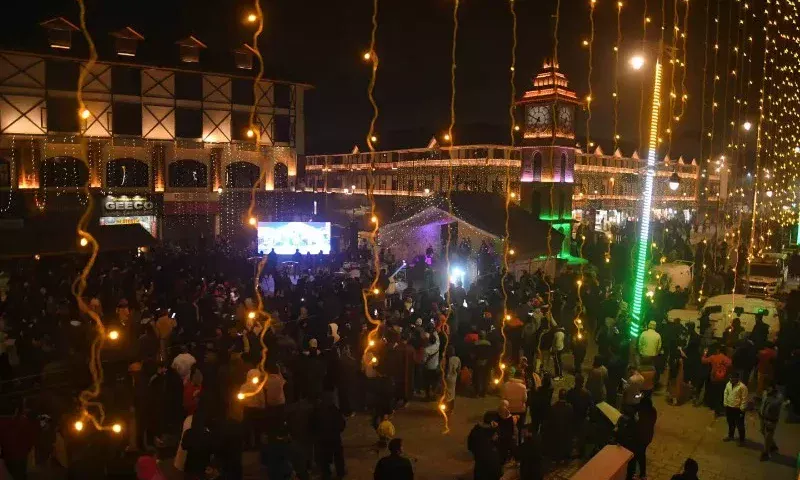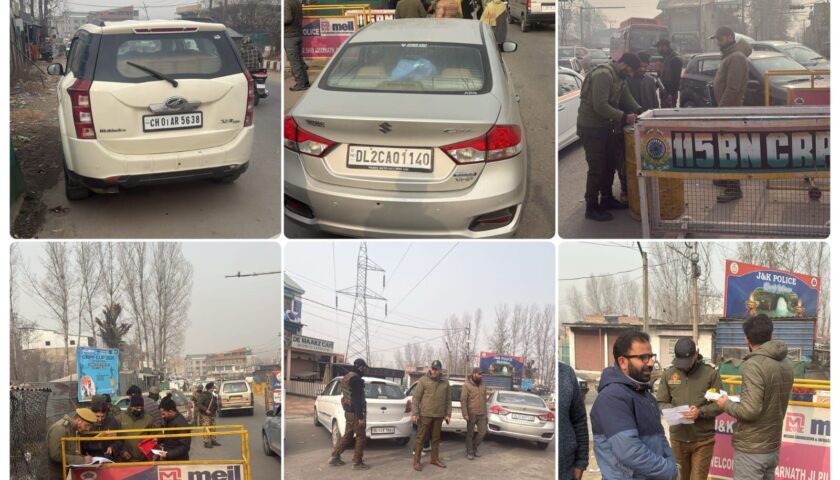A man was killed while 20 others were injured on Tuesday in clashes between stone-pelters and security forces near an encounter site in Shopian district of Jammu and Kashmir where two militants were killed.
Tamsheel Ahmad Khan of Vehil in Shopian died after suffering head injuries during the clashes near Kundullan, a police official said.
He said 20 other people were injured of which eight were referred to hospitals here for specialised treatment.
Some people had assembled near the encounter site and indulged in stone-pelting on security forces, who were engaged in an anti-militancy operation, officials said.
Two militants were killed in the operation that was launched in the wee hours on Tuesday after security forces got a tip-off about presence of the ultras in the area.
Facts:
Kashmir is an 86,000-square mile region in the northern part of the Indian subcontinent.
The separatist violence has killed more than 47,000 people, which does not include people who have disappeared due to the conflict. Some human rights groups and nongovernmental organizations put the death toll at twice that amount.
India and Pakistan have been fighting over Kashmir since both countries gained their independence in 1947.
The Line of Control separating Indian- and Pakistani-controlled parts of Kashmir is 435 miles (700 km) long.
India-controlled: One state, called Jammu and Kashmir, makes up the southern and eastern portions of the region, totaling about 45% of Kashmir.
Pakistan-controlled: Three areas called Azad Kashmir, Gilgit and Baltistan make up the northern and western portions of the region, totaling about 35% of Kashmir.
China-controlled: One area called Aksai Chin in the northeastern part of the region, equaling 20% of Kashmir.
Timeline:
August 15, 1947 – India and Pakistan gain independence from Great Britain. Kashmir initially decides to remain independent, choosing not to become a part of either Pakistan or India.
October 1947 – After armed tribesmen from Pakistan’s North-West Frontier Province invade Kashmir, Maharaja Hari Singh, the ruler of Kashmir, signs a letter acceding to India. In exchange for handing key powers to the central government in New Delhi, Kashmir gains India’s military protection. Pakistan does not recognize this letter as a legal document. This begins India and Pakistan’s first war over Kashmir.
January 1, 1949 – India and Pakistan agree to withdraw all troops behind a mutually agreed ceasefire line, later known as the Line of Control.
August 5, 1965 – India and Pakistan go to war again over Kashmir. Pakistan invades Indian-held Kashmir, but the fighting produces little territorial gain for Pakistan.
1971 – Fighting erupts again as part of the Indo-Pak war.
July 1972 – The Simla Agreement ends the fighting and establishes the Line of Control between Indian-controlled Kashmir and Pakistan-controlled Kashmir. The two sides continue to argue over the border.
1989 – Islamic militants begin an uprising in Indian-controlled Kashmir. Tens of thousands of people have been killed.
1999 – India and Pakistan fight a limited border conflict in Kashmir, after armed invaders cross the Line of Control in the town of Kargil.
July 25, 2000 – Hizbul Mujahedeen, a pro-Pakistan Kashmiri militant group, declares a unilateral cease fire for three months in Jammu and Kashmir.
August 3, 2000 – India begins peace talks with Hizbul Mujahedeen, in Srinagar.
August 8, 2000 – Hizbul Mujahedeen calls off its two-week-old ceasefire and orders its forces to resume fighting against Indian troops.
May 23, 2001 – India ends a six-month military ceasefire against Islamic guerillas in Kashmir while also inviting Pakistani military ruler, General Pervez Musharraf, to peace talks aimed at ending five decades of hostilities between the two countries.
July 14-16, 2001 – Pakistani President Pervez Musharraf and Prime Minister Atal Behari Vajpayee meet in Agra, India, for a three-day summit. The talks fail to produce a joint statement on Kashmir.
December 20, 2001 – The Indian army deploys troops on its border with Pakistan in the northern states of Kashmir and Punjab after an attack by militants (India says they were from across the border) on the Indian Parliament building. Pakistani troops also buildup across the frontier.
January 2002 – General Musharraf of Pakistan outlaws the three main Pakistani-based Islamic militant groups.
October 2002 – Four rounds of polls to choose a new state administration conclude in Indian-controlled Kashmir. About 300-500 people are killed during the election campaign.
November 2003 – India agrees to a Pakistani offer of a ceasefire along their borders in the disputed region of Kashmir. The ceasefire goes into effect November 26 and is the first ceasefire in 14 years.
January 4, 2004 – India’s Prime Minister Atal Bihari Vajpayee meets with Pakistan’s President Musharraf in Islamabad for a one-hour meeting. It is their first direct contact in two years.
June 2004 – India and Pakistan’s foreign secretaries meet for talks, the first detailed discussions between the two countries in six years.
November 14, 2006 – Indian Foreign Secretary Shiv Shanker Menon and his Pakistani counterpart, Riaz Mohammed Khan meet in New Delhi, India for peace talks. The main topic of discussion is finding ways to implement a proposed anti-terror mechanism that both countries have agreed to set up.
March 13, 2007 – Top Pakistani and Indian diplomats meet in Islamabad. Topics include improving conditions for hundreds of prisoners in each others’ jails and relaxing visa restrictions.
March 28, 2008 – Human rights workers find nearly 1,000 unmarked graves near the Line of Control, the border that divides Pakistani- and Indian-controlled portions of Kashmir. Hundreds of protestors in Indian Kashmir clash with police on April 25, demanding an investigation into the graves.
October 21, 2008 – India and Pakistan open a trade route for the first time in six decades on the Line of Control in Kashmir. Fruit, clothing and spices are among the items being transported.
Summer 2010 – Violence erupts in Kashmir and kills more than 100 people, the worst bloodshed in a decade.
January 14, 2011 – India’s home secretary announces that India will cut a fourth of its security forces in Kashmir over the next 12 months.
February 10, 2011 – Pakistan and India agree to resume peace talks that halted after the Mumbai terror attacks of 2008.
July 27, 2011 – Pakistani Foreign Minister Hina Rabbani Khar meets with Indian Foreign Minister S.M. Krishna in New Delhi to discuss ways to improve travel and trade across Kashmir.
April 8, 2012 – Pakistani President Asif Ali Zardari meets with Indian Prime Minister Manmohan Singh during a private trip. It is the first trip to India by a Pakistani leader in seven years.
November-December 2014 – After five rounds of elections, though the regional People’s Democratic Party (PDP) wins the most seats, it does not pick up the 44 seats necessary to form a government in Indian-controlled Kashmir.
February 2015 – The Hindu nationalist Bharatiya Janata Party (BJP) and the People’s Democratic Party (PDP), a regional party backed by the Muslim majority, announce the formation of a coalition government in Indian-controlled Kashmir. This follows five rounds of elections in 2014 without a clear winner and is the first time that the Hindu nationalist BJP will be part of the governing coalition in the state assembly. The coalition government is sworn in on March 1, 2015.
January 2016 – The death of the chief minister of the Indian state of Jammu and Kashmir, Mufti Mohammad Sayeed, creates tumult within the coalition government. The presumptive successor is Mehbooba Mufti, Sayeed’s daughter. She declines to take the oath of office, however, as relations fray between the PDP and the BJP. With the power-sharing alliance in crisis, Governor’s rule is imposed in accordance with the Constitution of Jammu and Kashmir.
April 4, 2016 – Mehbooba Mufti is sworn in as the first female chief minister of Indian-administered Jammu and Kashmir.
September 18, 2016 – In the early morning hours, armed militants enter an Indian army base in the garrison town of Uri — about 63 miles (102 kilometers) from Srinagar, the capital of Indian-administered Jammu and Kashmir — and kill 19 soldiers. Several hours later, four militants are killed in a shootout with the Indian army. It’s unclear which militant group is responsible. The attack, which takes place near the de facto border between India and Pakistan in Kashmir, is one of the deadliest on an army base in Kashmir since militant attacks began in 1989.
September 29, 2016 – Two Pakistani soldiers are killed after clashes with Indian troops on the de facto border in Kashmir.
October 2016 – India relocates more than 10,000 people from around the disputed border area of Kashmir as tensions continue to escalate with Pakistan.
November 14, 2016 – Seven Pakistani soldiers are killed in an exchange of fire between Pakistani and Indian forces at the Line of Control.
November 15, 2016 – Raja Farooq Haider, the prime minister of Azad Jammu and Kashmir, the Pakistani-controlled part of the disputed region, says the government has so far moved 8,000 people to “safer places” in the wake of ongoing “Indian shelling,” and plans are being made to move even more people. In response, Indian defense spokesman Lt. Col. Manish Mehta tells CNN from the Indian city of Jammu, “We always respond appropriately and effectively whenever there is a ceasefire violation from the Pakistan side.”
August 1, 2017 – Violent protests erupt over the killing of a militant leader. According to Indian officials, Pakistani commander of banned terror group Lashkar-e-Taiba (LeT) Abu Dujana, along with his aide Arif Nabi Dar, were killed after engaging in a lengthy gun battle with government troops in Kashmir’s Pulwama district, 35 kilometers south of the capital Srinagar.




